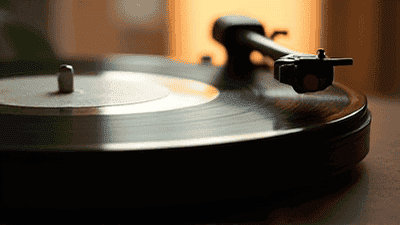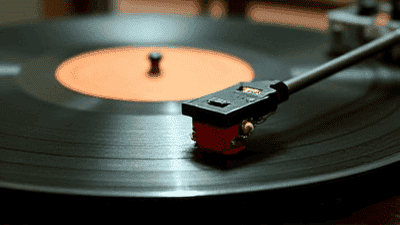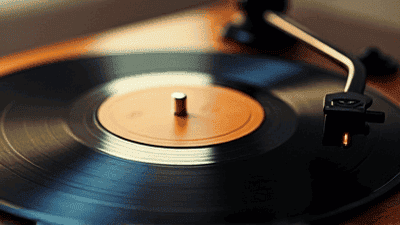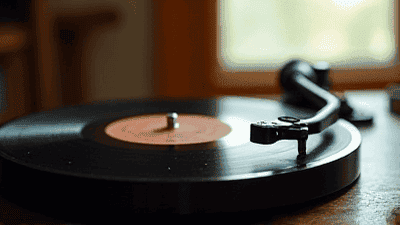
In an age dominated by digital music streaming, where playlists can be created and shared with the mere click of a button, one may assume that the physical format of music is on the brink of extinction. However, contrary to popular belief, vinyl records are experiencing a remarkable renaissance. A growing number of music enthusiasts are returning to the warmth and tangible nature of vinyl, leading to a resurgence of interest that is transforming the music landscape.
The History of Vinyl Records
A Brief Overview
Vinyl records have a storied history, dating back to the late 1800s. Initially created from shellac, these early records set the foundation for audio entertainment as we know it. The first vinyl 33 RPM long-playing records were introduced in the late 1940s, allowing artists to record longer pieces of music and revolutionizing the music industry. For several decades, vinyl was the primary medium for music consumption until the rise of cassettes and CDs in the 1980s and 1990s shifted consumer preferences.
The Decline and Near Extinction
As digital formats began to dominate, vinyl sales plummeted. The convenience of CDs and MP3s made them more appealing to consumers, leading to a significant decline in vinyl production and a shrinking market. By the early 2000s, it seemed that vinyl records were on the verge of disappearance, with many record stores closing their doors.
The Vinyl Comeback

The Resurgence of Interest
Starting in the late 2000s, vinyl began to make a significant comeback. This resurgence was driven by a combination of factors, including nostalgia, a desire for tangible music experiences, and the unique sound quality that records provide. As music lovers in their 30s and 40s sought to reconnect with their youth, younger generations also discovered the beauty and artistry of vinyl.
The Role of Music Collectors
Vinyl records appeal not only to casual listeners but also to dedicated collectors who appreciate the artistry of album covers and the tactile nature of handling records. Vinyl collecting has become a passionate hobby for many, leading to the growth of community events such as record fairs, where enthusiasts can buy, sell, and trade their collections. Social media platforms have also fostered online communities for collectors to connect and share their finds.
The Unique Experience of Listening to Vinyl
Sound Quality and Warmth
One of the key reasons vinyl records have regained popularity is the iconic sound quality they offer. Audiophiles often praise vinyl for its warmth and richness, which is a result of the analog format capturing the nuances of music in a way that digital formats can sometimes fail to replicate. Many listeners find that the sound of a vinyl record provides a more immersive and engaging experience compared to compressed digital files.
The Ritual of Playback
Listening to vinyl records is an experience unlike any other. The process of selecting an album, gently removing it from its sleeve, and placing it on a turntable is a ritual that fosters a deeper connection between the listener and the music. The physical act of playing a record also encourages listeners to engage with the entire album rather than simply skipping tracks, allowing for a more profound appreciation of the artist’s work.
The Aesthetic Appeal of Vinyl

Album Art and Packaging
Vinyl records bring back the significance of album art, which offers a visual representation of the music contained within. Large-scale album covers provide a canvas for artistic expression, allowing visual artists and musicians to collaborate and create memorable visual identities. Many collectors value the aesthetic aspect of their collections, proudly displaying their records and album sleeves as part of their home decor.
Limited Releases and Special Editions
The rise of vinyl has led to the emergence of limited releases and special editions, attracting collectors and enthusiasts. Colored vinyl, picture discs, and exclusive artwork have become popular, making these records valuable pieces of art as well as music. Record labels have capitalized on this trend by releasing deluxe versions of classic albums, complete with bonus tracks and exclusive booklets.
Vinyl's Influence on the Music Industry
Artist Engagement and Sales
Artists are increasingly recognizing the value of vinyl in their marketing strategies. Independent musicians and major label artists alike are producing vinyl versions of their albums, catering to the growing demand for this format. Vinyl sales have become an essential revenue stream for many musicians, allowing them to connect with fans on a more meaningful level.
The Role of Record Stores
Record stores are making a comeback as well, serving as community hubs for music lovers. Many independent shops now offer curated selections of vinyl, hosting listening events and live performances. These spaces foster a sense of community and provide a platform for local musicians to connect with audiences. The success of vinyl has breathed new life into many small businesses, making record stores an integral part of the music landscape once again.
The Impact of Streaming on Vinyl Sales

The Coexistence of Formats
Streaming has transformed the way we discover and consume music, but rather than eliminating the demand for vinyl, it has created a unique coexistence. Many listeners use streaming services to explore new music before deciding to purchase records. Streaming enables users to sample and discover artists without financial commitment, but the desire for a physical copy still remains strong for many.
Vinyl as a Premium Product
As streaming continues to dominate the industry, vinyl has emerged as a premium product. Many music enthusiasts view vinyl records not just as a means of listening but as collectible items that hold intrinsic value. The desire for high-quality sound and the unique experience of owning physical music continues to drive vinyl sales and elevate its status within the industry.
The Future of Vinyl
Sustained Growth and Innovation
As the vinyl revival continues to thrive, industry experts predict sustained growth for physical music sales. Record labels and artists are likely to innovate further, finding new ways to connect with fans through unique packaging and limited editions. Partnerships between vinyl manufacturers and artists will likely grow, fostering creativity and collaboration.
Integration of Technology
Moreover, advancements in technology may lead to new possibilities for vinyl. Innovations such as Bluetooth connectivity and enhanced turntables are catering to tech-savvy consumers, combining the best elements of traditional playback with modern convenience. The integration of digital elements into vinyl experiences may attract a younger audience seeking a blend of nostalgia and innovation.
Conclusion: Embracing the Vinyl Revival
The resurgence of vinyl is a testament to the enduring appeal of physical music and the tangible connections it fosters between artists and listeners. As the world moves further into the digital age, vinyl records serve as a reminder of music's rich history and the artistry involved in its creation. Whether through the distinct sound quality, the aesthetics of album art, or the communal experiences fostered by record stores, vinyl continues to capture the hearts of music lovers.
As we embrace the vinyl revival, it is clear that this iconic medium will remain an essential part of the music landscape. The future is bright for vinyl, and its continued growth signifies a deeper appreciation for the artistry of music in all its forms. Rediscovering vinyl is not just a nostalgic journey; it is an invitation to engage with music in a more meaningful and profound way.








